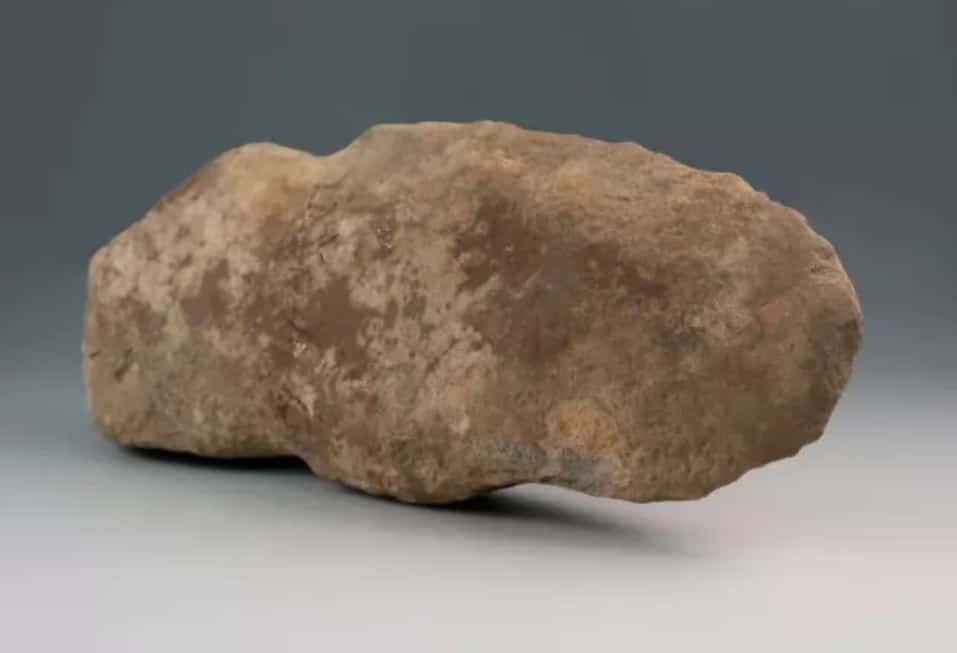A field trip to Mount Vernon is made memorable for a group of students and teachers who found a 6,000-year-old stone axe head at George Washington’s Potomac River estate.
The students worked alongside Mount Vernon archaeologists to discover the axe, roughly seven inches long and three inches wide, along a ridgeline that was used by Virginia Indians as many as 8,000 years ago. The axe would have been a valuable tool for Native Americans to chop wood in the fourth millenia. And it reveals the skills needed to make such a tool:
First, the craftsperson would “chip” a river cobble with hammer stone, to make the sharp cutting edge on the face of the axe. Then, he would hammer it with a harder stone to make a smoother cutting surface. Then, he’d use a grinding stone to smooth the surface one more time. Finally, the maker would peck a groove along the back end of the axe head, to which he’d attach a wooden handle.
“The axe provides a window onto the lives of individuals who lived here nearly 6,000 years ago,” said Sean Devlin, Mount Vernon’s curator of archaeological collections. “Artifacts, such as this, are a vital resource for helping us learn about the diverse communities who shaped this landscape throughout its long history.”
Archaeologists believe the spot where the axe head was found wasn’t necessarily an Indian village; more likely, it was a stopover for communities traveling along the river and using its resources.
More recently, the same site was also Mount Vernon’s African American cemetery, where oral history says slaves and possibly some of their freed descendants were laid to rest.
Mount Vernon’s archaeologists keep an electronic database of every artifact recovered on the property, cleaning, preserving, and storing all of the items on-site. The archaeology collection includes more than 5,000 pieces of history.
-Meg Walburn Viviano



